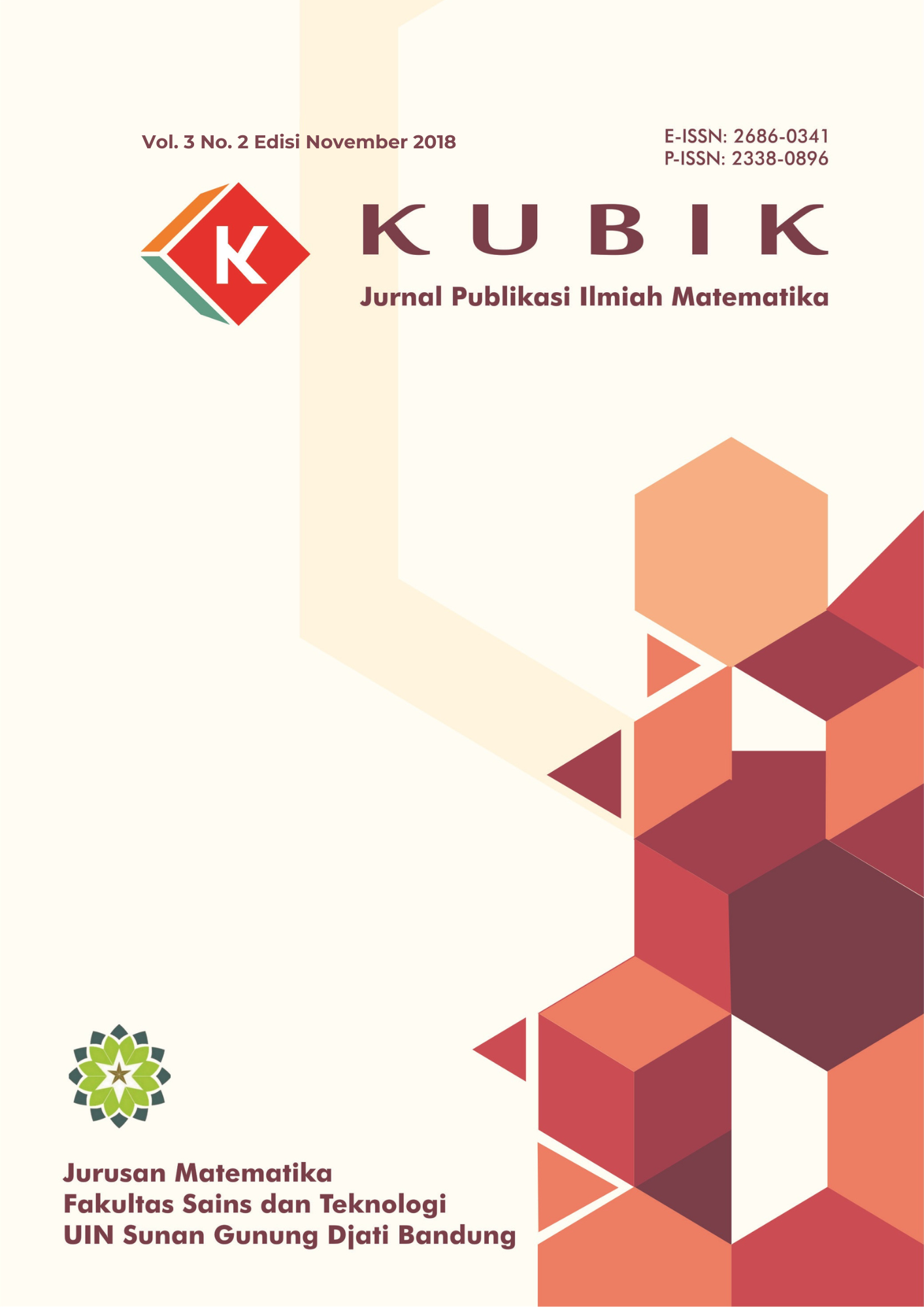Analisis dan Simulasi Model Matematika untuk Kehidupan Sosial dan Dominasi dalam Koloni Semut Leptothorax Acervorum
DOI:
https://doi.org/10.15575/kubik.v3i2.4114Keywords:
Leptothorax acervorum, kompetisi, model matematika, kestabilan, Koeksistensi.Abstract
Semut Leptothorax acervorum memiliki karakteristik kehidupan sosial, diantaranya pembagian peran, keharmonisan, dan kompetisi betina-betina dalam perebutan hak reproduksi di koloninya. Kompetisi yang mematikan ini terjadi baik sesama gyne maupun gyne dengan pekerja. Berdasarkan fenomena yang terjadi pada koloni semut Leptothorax acervorum akan dibangun model matematika. Model ini dibentuk dengan membagi populasi semut menjadi tiga kompartemen, yaitu gyne, pekerja, dan jantan pada populasi Leptothorax acervorum. Fenomena yang menarik seperti kompetisi-kompetisi yang terjadi pada semut Leptothorax acervorum dianalisis dan kestabilan koeksistensi juga akan ditunjukkan secara analitik. Selanjutnya, untuk melihat pengaruh kompetisi terhadap koeksistensi dalam koloni akan ditunjukkan dengan simulasi numerik.
References
Bernadou, A., et. al. (2016). Body Size but not Colony Size Increases with Altitude in the HolarcticAnt, Leptothorax Acervorum. Ecological Entomology,41, 733-736. DOI: 10.1111/een.12338.
Heinze, J., et. al. (2003). “The Significance of Latitudinal Variation in Body Size in a Holartic Ant, Leptothorax Acervorumâ€, Ecography, 26: 349-335. Doi:10.1034/j.1600-0587.2003.03478.
Ito, F. (2005). Mechanism Regulating Functional Monogyny in Japanese Population of Leptothorax Acervorum (Hymenoptera, Formicidae, Myrmicinae): Dominance hierarchy and Prefential Egg Cannibalism. Belg j Zool, 135:3-8
Heinze, J, and Ortius, D. (1991). Social Organization of Leptothorax Acervorum from Alaska (Hymenoptera: Formicidae). Psyche 1991,98:227-240.
Heinze, J., et.al. (2001). Sex Ratio in The Facultatif Polygynous Ant, Leptothorax Acervorum. Behavioral Ecology and Sociobiology,springer, 50 : 270-274.
Trettin, J., et.al. (2011). Queen dominance and worker policing control reproduction in a threatened ant, BMC Ecology 2011, 11:21.
Kühbandner, S., et. al. (2014). Age and Ovaria Development are Related to Worker Personality and Task Allocation in the Ant Leptothorax acervorum. Current Zoology: 60 (3): 392–400.
Friend, LA., and Bourke, AFG. (2014). Workers Respond to Unequal Likelihood of Future Reproductive Opportunities in An Ant. Animal Behaviour. Vol 97: 165-176.
Trettin, J., (2015). Proximate and Ultimate Factors InfluencingRreproductive Skew in the Ant Species Leptothorax acervorum (Hymenoptera: Formicidae). Disertasi untuk tingkat doctoral dari ilmu alami (dr. Rer. Nat.) Fakultas biologi dan obat preclinik .universitas Regensburg.
Gill, R., and Hammond, R. (2011). Workers Influence Royal Reproduction. Proc R Soc Lond B 2011 278, doi: 10. 1098/rspb.2010.1774.
Trettin, J., et.al. (2014). Behavioral Plasticity in Ant Queens: Environmental Manipulation Induces Aggression among Normally Peaceful Queens in the Socially Polymorphic Ant Leptothorax acervorum. PLoS ONE 9(4): e95153.
http://mathworld.wolfram.com/DescartesSignRule.html diakses 4 Mei 2018
Hirsch M and Smale S. 1974. Differential Equations, Dynamical System, and Linear Algebra. London: Academic Press, INC.
Downloads
Published
How to Cite
Issue
Section
Citation Check
License
Authors who publish in KUBIK: Jurnal Publikasi Ilmiah Matematika agree to the following terms:
- Authors retain copyright and grant the journal right of first publication with the work simultaneously licensed under a Attribution-ShareAlike 4.0 International (CC BY-SA 4.0) License that allows others to share the work with an acknowledgment of the work's authorship and initial publication in this journal.
- Authors are able to enter into separate, additional contractual arrangements for the non-exclusive distribution of the journal's published version of the work (e.g., post it to an institutional repository or publish it in a book), with an acknowledgment of its initial publication in this journal.
- Authors are permitted and encouraged to post their work online (e.g., in institutional repositories or on their website) prior to and during the submission process, as it can lead to productive exchanges, as well as earlier and greater citation of published work (See The Effect of Open Access).
Â









